
So, what scales do you actually need to learn on bass?
- Are you years-deep in bass knowledge and you want to understand any music-talk-jargon that might get thrown around on a bandstand or a bass forum? You’ll need many scales.
- Are you about to move to New York with the aim of playing insane jazz-funk with all the heaviest hitters? You will need very many scales.
But if you’re a beginner who wants to learn the scales that’ll get you the most leverage for real-life killer bass grooves, there are two that stand alone and apart in their 5 notes of glory:
The MAJOR and MINOR pentatonic scales.
These two scales are so optimized for making up bass lines, they’re like bass line vending machines.
Pop in a good rhythm, punch in the notes of the scale and bam – you have a cool, frosty, delicious bass line in your hands.
And no, you don’t need to learn 5 shapes of pentatonics, even if I do keep finding them all over the bass internet. That’s for guitar players who are learning their weedly-weedlies.
For a beginning bassist, there are just two practical and useful shapes for each scale.
I’m gonna show you both shapes for both scales, plus a heap ton of legendary riffs to get you playing these things in the most-groovy, least-boring-exercisey way possible.
By the end of this article you’ll be a pentatonic wizard, playing classic bass lines from across the ages, and dropping rhythm after rhythm into these pentatonic vending machines to get your very own cool and refreshingly excellent bass lines.
We begin with my personal favorite:
The Minor Pentatonic
The names might suggest that the major pentatonic should go first. Screw that. This scale rules. It is my ultimate bass groove / bass noodle / goof-around-and-sound-good scale. I have absolutely delightful bassy times with this scale. I want you to have delightful bassy times as well.
I’m going to show you 2 ways to play this scale along with famous bass line examples of each.
The Static Form
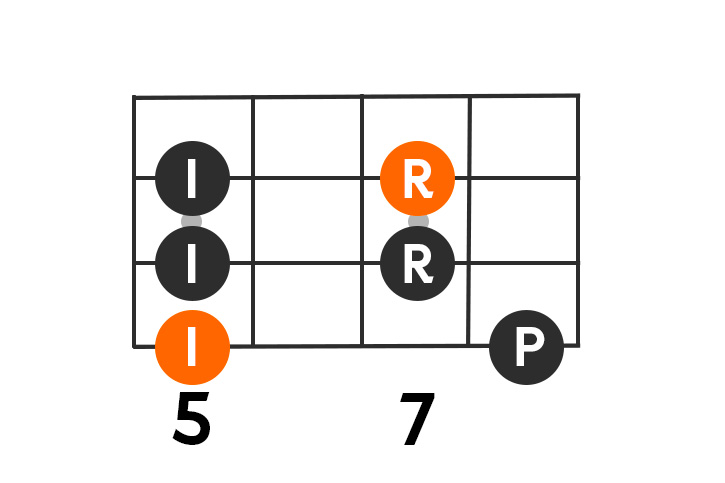

This is the static form of the minor pentatonic.
It keeps the hand in one position. It’s compact and keeps everything close.
If you want to take this form on a test run, here’s a great Berry Oakley (bassist for The Allman Brothers) groove to play:
WARNING! The bass lines here are not beginner level basslines!
If you’re brand new to bass, there are some much more beginner-friendly grooves in the “Legendary Minor Pentatonic Bass Lines” section further down.
I’m using these more challenging ones here because they do such a perfect job of showing each scale form.
This is from the verse part of Whipping Post:
 Whipping Post
Whipping Post
by The Allman Brothers Band
Bassist: Berry Oakley
Scale: Minor Pentatonic
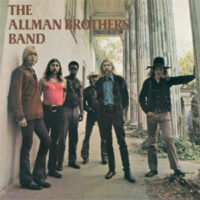

It starts on the high octave, then uses the descending scale as the riff.
Almost as though the minor pentatonic was some kind of bass-line-dispensing vending machine or something…
Like all scale forms on the electric bass, this scale form can be moved anywhere. Just play the exact same fingering when you move to a new place.
Try it in C minor:

One of my favorite all time basslines uses this key and this scale form.
All hail bassist George Porter Jr. and The Meters. Behold: the mighty Cissy Strut!
 Cissy Strut
Cissy Strut
by The Meters
Bassist: George Porter Jr.
Scale: Minor Pentatonic
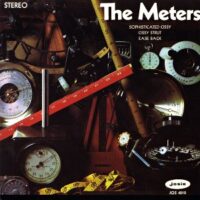


Once again, the bass line starts on the high octave. Keep that idea in your bass player tool box! (Most beginners always start from the low root when they’re playing. There’s no problem with that. But both lines you played here started high and ended low. Very cool.)
I love this compact scale form.
Efficiency is great.
But you know what I love even more? I love me some smooooth shifting up and down the fingerboard.
I’m going to show you the second way to play a minor pentatonic scale. It’s the shifting form and it is just about my favorite thing to do on the bass.
The Shifting Form

If you start poking around on the internet, you’ll find all sorts of articles and charts and videos going on about 5 forms of the minor pentatonic and how to find and play them all over your fretboard. Ignore these. This concept exists because guitar players have secretly infiltrated the bassist-internet and are messing everything up.
The 5 different shapes are fine for one day, down the line, when you’re really intent on shredding solos up and down the neck (you know, like a guitar player). This can be fun stuff, but it won’t help you in any real practical way*.
(*said the guy who tabbed out a super rad bass solo for you to learn at the end of this section.)
The 2 shapes I’m showing you are going to be all you’ll need for maximum minor pentatonic grooving.
Here’s the shifting form in the key of D:
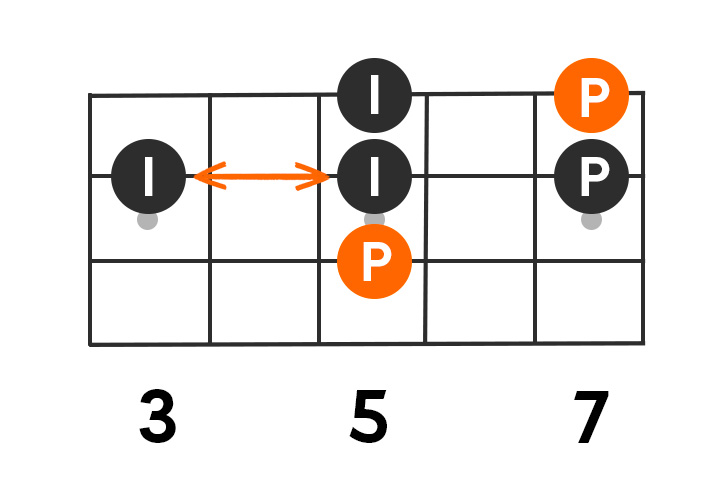

Notice how it’s all the SAME NOTES as the static form – we just moved one of them to get at a different fingering option.
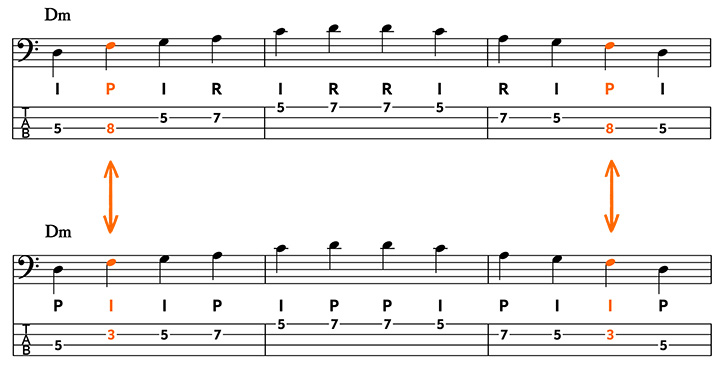
And now – let us unleash the true power of the shifting scale with the help of our good buddy, John Paul Jones of Led Zeppelin.
 Moby Dick
Moby Dick
by Led Zeppelin
Bassist: John Paul Jones
Scale: Minor Pentatonic
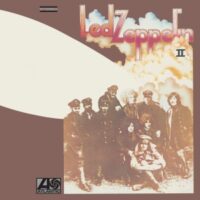

It’s such a killer riff!
I love that big octave jump at the beginning, and how the rest of the riff is winding your way back down to the low octave to start again.
Not to mention jamming with Bonzo.
 Freddie’s Dead
Freddie’s Dead
by Curtis Mayfield
Bassist: Joseph “Lucky” Scott
Scale: Minor Pentatonic
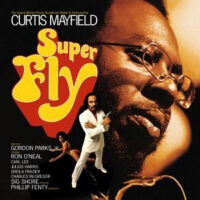
To see another way to use the shifting form of the minor pentatonic scale, check out the Joseph “Lucky” Scott bass line from Freddie’s Dead by Curtis Mayfield.
The shifting scale form you just played started on the root note, went up to the next root note (one octave higher) and then came back down.
To play Freddie’s Dead (and to unleash the true power and potential of the shifting form), you’re going to copy-paste this scale form to some lower notes.
It may sound scary, but I promise you – once you learn that shifting form – it’s as easy as a copy-paste command on a keyboard.
To show you how to copy-paste this scale form to some lower notes, look at this picture and the tab that goes with it:

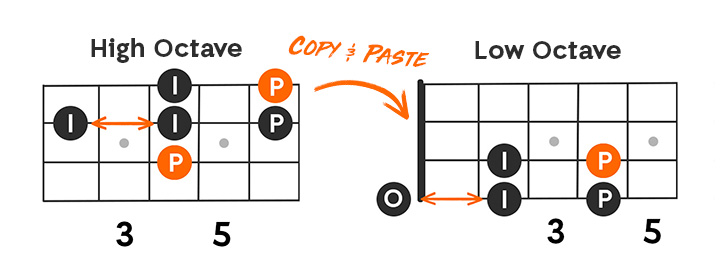
You can see how the same movements and patterns that you played for your shifting form are the exact same, only moved to a different place on your bass.
It’s a classic copy-paste.
For Freddie’s Dead, you’ll be playing the C# minor pentatonic, and most of the bass line will happen below the C# root note on the A string, using that lower copy-paste you just saw above.
Prepare for ultimate funkiness:
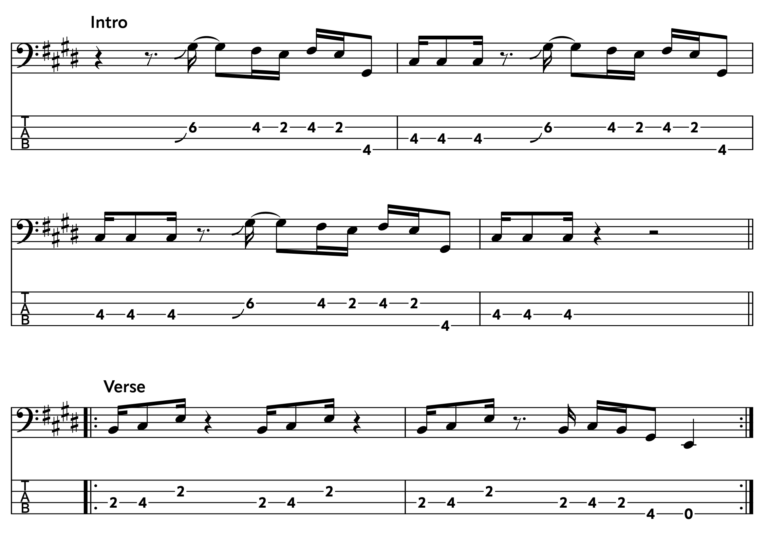
Notice how the groove builds above and below that C# on the A string.
The copy-paste powers of this shifting form make it so easy to move into those expanded notes of the scale.
You’ll see more examples of this in the bass line examples below.
Great that you’ve got two forms of this scale to play.
But when do you use this scale? How do you know it’s time to pull out the minor pentatonic and unleash the grooves?
When to Play Minor Pentatonic
This scale can be played whenever there’s a minor chord happening in the music.
Which brings up the question: what’s a minor chord?
Chords are those things the guitars and keyboards are doing with big bunches of notes all happening at the same time.
We one-note-at-a-time folks play to the chords, but we don’t play the actual chords much ourselves.
So – how do you know if there’s a minor chord happening?
The musical world has two big categories of chord, two hemispheres to planet music: Minor and Major. The dark, and the light.
MINOR chords tend to sound darker, scarier, sadder, and grittier.
MAJOR chords tend to sound lighter, happier, sunnier, and gentler.
So, if you’re just starting out and my weird sound adjectives aren’t helping, how do you know if you’re playing to a major or a minor chord?
Use my patented 3 step guide:
 Chord Detector System
Chord Detector System
 Step 1: Ask Someone What Chord It Is
Step 1: Ask Someone What Chord It Is
- If you’re in a group/band/jam scenario, someone should be happy to let you know, thus ensuring good sounding bass notes.
- If anyone gives you attitude here, they are lame. Time to find new music buddies.
 Step 2: Just Listen and Try to Tune Into the Sad/Happy Vibes
Step 2: Just Listen and Try to Tune Into the Sad/Happy Vibes
- The more you train up that ear, the better off you’ll be.
 Step 3: Just Play Minor Pentatonic
Step 3: Just Play Minor Pentatonic
- If it sounds bad, try major pentatonic (which you’ll be learning here real soon).

STEP 4 – Check out our amazing beginner bass course right here.
What to Play With the Minor Pentatonic Scale
I claimed this scale is a bass line vending machine.
And it is.
But just like a vending machine doesn’t do anything unless you have the cash to drop in, you won’t be able to do much with this scale until you pick up on some classic tips, moves and maneuvers from the pros.
Once you go through and learn a handful of bona-fide classic bass lines that use this scale, you’ll have everything you need to start pumping the scale vending machine full of ideas to – eventually – have your own killer bass lines.
Legendary Minor Pentatonic Riffs
(By Legendary Bassists)
I’ve divided these bass lines into 3 levels of difficulty.
You can go through it in order or, if you’re impatient and foolish like me, you can scan it for the bass line that catches your fancy.
Jumping ahead might be trickier, but if that’s what inspires you to do the work, go for it, I say.
Level #1
Green Onions by Booker T. & the M.G.s
Another One Bites the Dust by Queen
Ladies’ Night by Kool and the Gang
Level #2
I Love Rock ‘n Roll by Joan Jett
Level #3
Bombtrack by Rage Against The Machine
 Green Onions
Green Onions
by Booker T. & the M.G.s
Bassist: Donald ‘Duck’ Dunn
Scale: Minor Pentatonic
Difficulty: Level #1
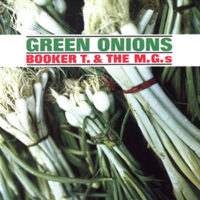
Donald ‘Duck’ Dunn is a gem and hero of the electric bass. His lines are so solid, so great, so supportive and, much of the time, so simple.
Here he is with Booker T. and the M.G.s:
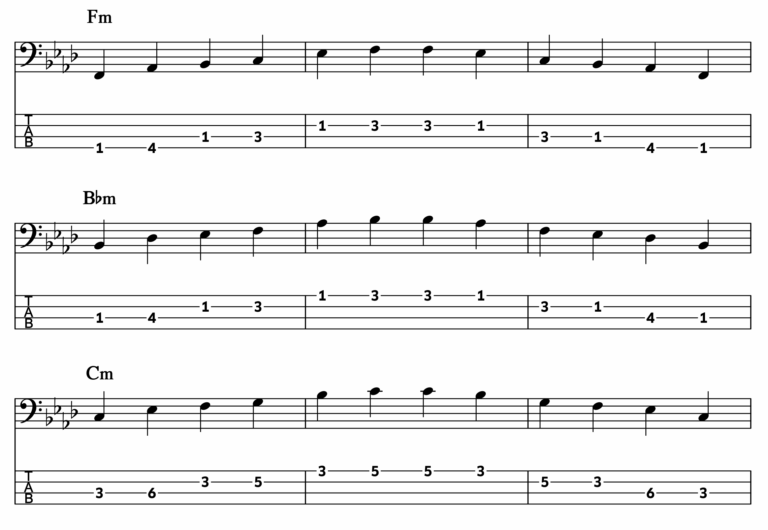
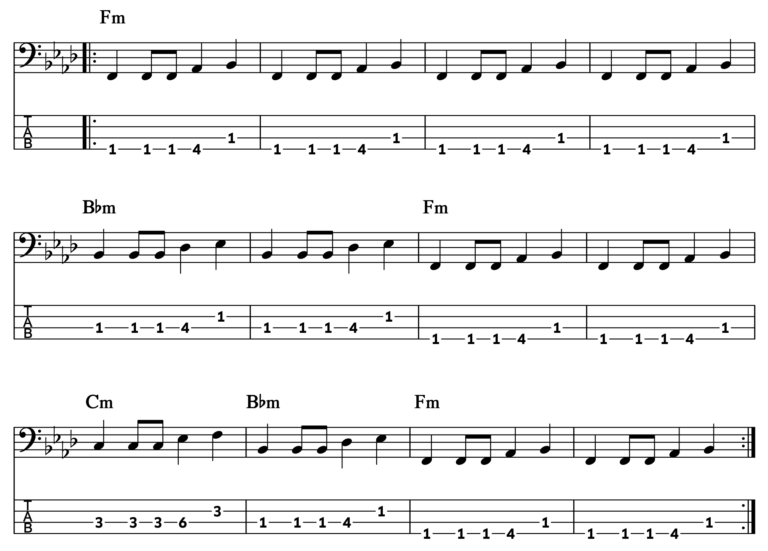
Things to notice (for your own bass line creation):
- He doesn’t use much of the scale – just those first 3 notes. But it’s damn good and groovy as hell.
- Notice how he uses the same pattern, but moves it to 3 different places during the song. Sure helps to have the scale forms memorized and dialed into your fingers.
- How about those massive stretches on those low, low frets? I can’t stand stretching and straining my hand like that so I do micro-shifts.
Instead of leaving your hand in one place and straining the fingers to reach out, you can shift the entire hand UP to reach those stretches. Then just shift BACK.
The movements are very subtle and small (thus the micro shift), and can save your fingers a ton of unnecessary strain.
 Another One Bites the Dust
Another One Bites the Dust
by Queen
Bassist: John Deacon
Scale: Minor Pentatonic
Difficulty: Level #1
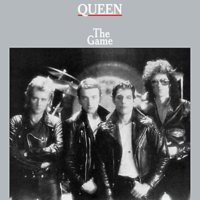
John Deacon’s iconic line from the iconic song from the iconic band. It’s the same first 3 notes of the scale that Duck Dunn was using in Green Onions, but now it’s off of the open E string which makes it much easier to reach.
Playing the minor pentatonic from the open string can feel weird at first, but it’s just another way to copy-paste the shifting scale form. Check out the tab and graphic below to see what I mean:



Things to notice (for your own bass line creation):
- Repeating notes – particularly the root note – is never a bad idea.
- The notes here aren’t special (we just saw a similar pattern in Green Onions) but the rhythm makes this bass line an all-time classic.
RHYTHM is way more important than notes. A cool rhythm with one note will be better than a bad rhythm with a million notes.
 Ladies’ Night
Ladies’ Night
by Kool and the Gang
Bassist: Ronald Bell
Scale: Minor Pentatonic
Difficulty: Level #1
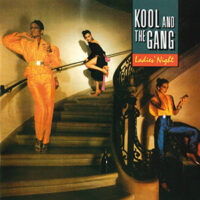
Ronald Bell is on bass for this Kool and the Gang classic.


Things to notice (for your own bass line creation):
- A cool rhythm will make the notes sound cool!
- Exact repetition of a bass line will always build the most solid, dance-able groove. No squirrlin’ or noodlin’ around here!
- Simple is groovy.
 I Love Rock ‘n Roll
I Love Rock ‘n Roll
by Joan Jett
Bassist: Gary Ryan
Scale: Minor Pentatonic
Difficulty: Level #2

Gary Ryan is the credited bassist on Joan Jett’s version of this rock anthem. The intro and verse are what minor pentatonic is made for:

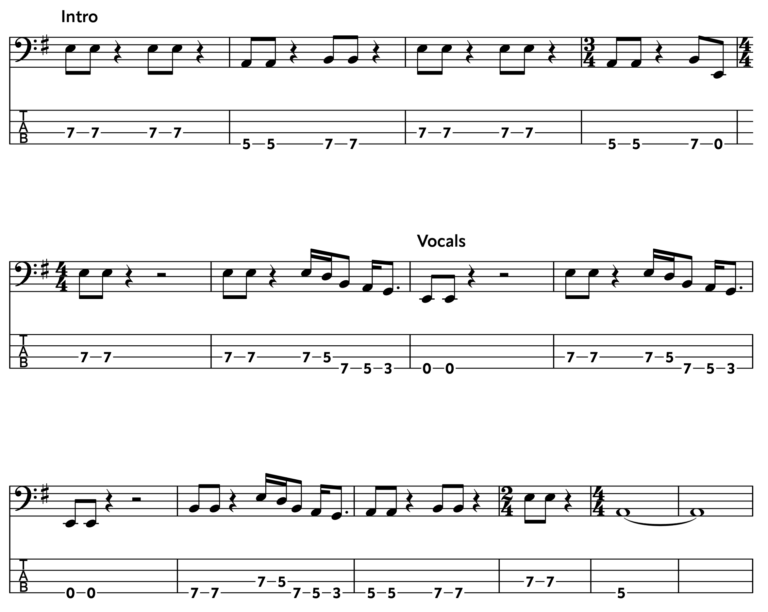
Things to notice (for your own bass line creation):
- This is the shifting minor pentatonic form, but built from the open string.
- The bass doesn’t play all the notes during the intro – the guitar has the in-between notes.
- The bass starts the phrases on the higher octave root note.
- Space! So much space for vocals, drums and vibes! Never feel like you have to fill space just to make sound. Most of the time, space is the best answer.
- Gotta love a riff that uses the whole scale!
 Low Rider
Low Rider
by WAR
Bassist: B.B. Dickerson
Scale: Minor Pentatonic
Difficulty: Level #2

I love it when the bass line makes the song. Everyone can sing the trumpet part to Low Rider… but it’s B.B. Dickerson’s bass line that keeps the song on the tracks.

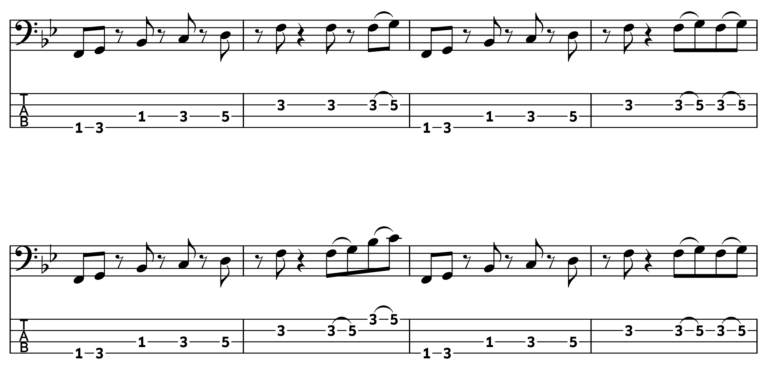
Things to notice (for your own bass line creation):
- This is the shifting form from G.
- The bass line doesn’t start on the root, but on the note just below the root. This sounds cool and is, thus, permitted by the official council of bassists.
- This is a teeny little expansion of the shifting form below the root!
- Repetition wins again! It’s important to remember that bass lines like this are parts. If they stay the same, they help the song stay together and let all the other parts build on top of the solid, reliable foundation. Beware the noodles!
- That cool hammer-on at the end is dynamite.
 Them Changes
Them Changes
by Buddy Miles
Bassist: Billy Cox
Scale: Minor Pentatonic
Difficulty: Level #2
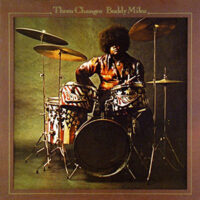
I was handed the Buddy Miles CD, Them Changes, by Bobby Vega when I went to him for a lesson on how to play… well… funkier. Buddy Miles played with Jimi Hendrix and Billy Cox in Band of Gypsys. Billy Cox also played bass on Buddy Miles’ solo project where they recorded this jam.
So, basically, thanks Bobby Vega.
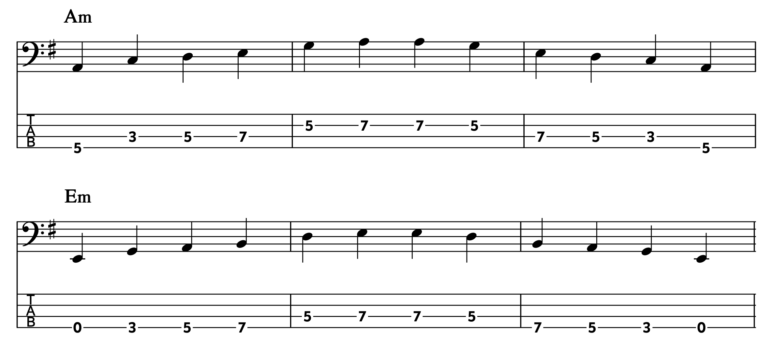

Things to notice (for your own bass line creation):
- They’re using two different minor pentatonic scales here! First in A, then in E.
- The A minor pentatonic is the static form, the E minor pentatonic is the shifting form from the open string.
- The pattern for the riff is the exact same (relatively) in A and in E. That’s a great tip – if you have a minor pentatonic riff you like, just play it in a couple of different places. Then the riff becomes a song. Done.
 August 10
August 10
by Khruangbin
Bassist: Laura Lee Ochoa
Scale: Minor Pentatonic
Difficulty: Level #3
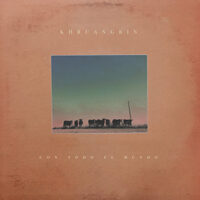
Khruangbin has made a phenomenal music career building on the types of bass grooves we all love to play. Laura Lee Ochoa’s bass lines make the song every time.

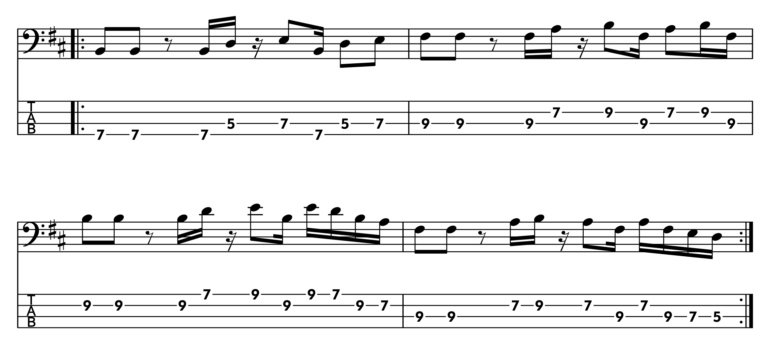
Things to notice (for your own bass line creation):
- It’s like I personally commissioned Khruangbin to “please make a really cool and popular song with a shifting minor pentatonic scale form so I can use it for teaching”. It’s the shifting form in full glory and power.
- Notice how easy it is to get into that second octave of the scale! It’s like starting the scale over again, but you get to use the same fingering and the same shapes.
- A repeating rhythm will always serve you well. It’s great for establishing groove.
- All of the bass lines in the previous levels were much shorter. This bass line takes its time, climbs to the upper octave, and then winds its way back down before repeating. This makes everything feel more spacious and patient.
 Bombtrack
Bombtrack
by Rage Against The Machine
Bassist: Tim Commerford
Scale: Minor Pentatonic
Difficulty: Level #3
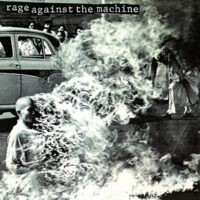
This is a real fast moving workout! Tim Commerford’s bass line here is matching the guitar note for note. To see how this riff relates to minor pentatonic, you need to do another copy-paste, this time with the static form. Using the open strings can be disorienting – so check out the tab and graphic here to get your bearings.
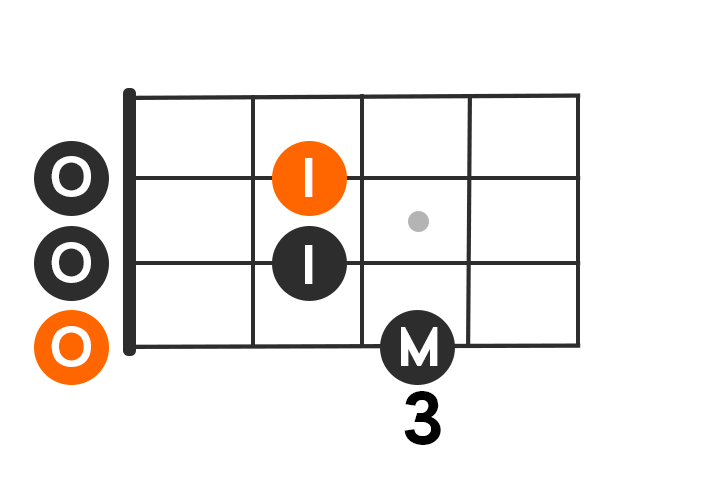
You can see in the shape diagram here that this is just the static shape, but the open string doesn’t need any fingers! I hope this image can help with the weird disorientation that comes with scale shapes moving to the open string.


Things to notice (for your own bass line creation):
- Copy-Paste is one of the greatest tricks you can use on your bass. It helps you move things anywhere on your instrument.
- It’s like a bass line tongue twister – so many repeated notes and frets moving so fast! The way to get through it successfully (just like a tongue twister) is to go slowly! Once you hear it perfectly and slowly and build up the muscle memory slowly, you’ll be able to play faster and play it right!
- There are two places where there are non pentatonic scale notes in the bass line. This is always permitted! It’s like in a recipe when there’s a secret ingredient. If it makes things better – aka: if it sounds good – it’s fine.
 Ape Is High
Ape Is High
by Mandrill
Bassist: Frederick “Fudgie Kae” Solomon
Scale: Minor Pentatonic
Difficulty: Level #3

Frederick “Fudgie Kae” Solomon plays the bass for this Mandrill tune. It’s a deep exploration into the potential of a one chord funk jam. I’m going to show you two parts – the first riff of the song and the – gasp – bass solo!
It’s not easy, but it is awesome.
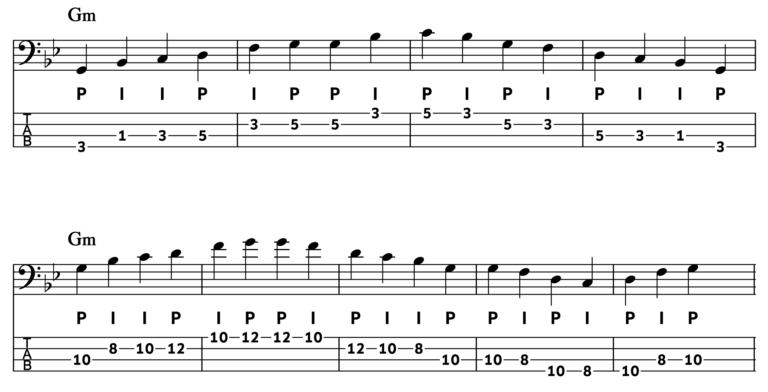

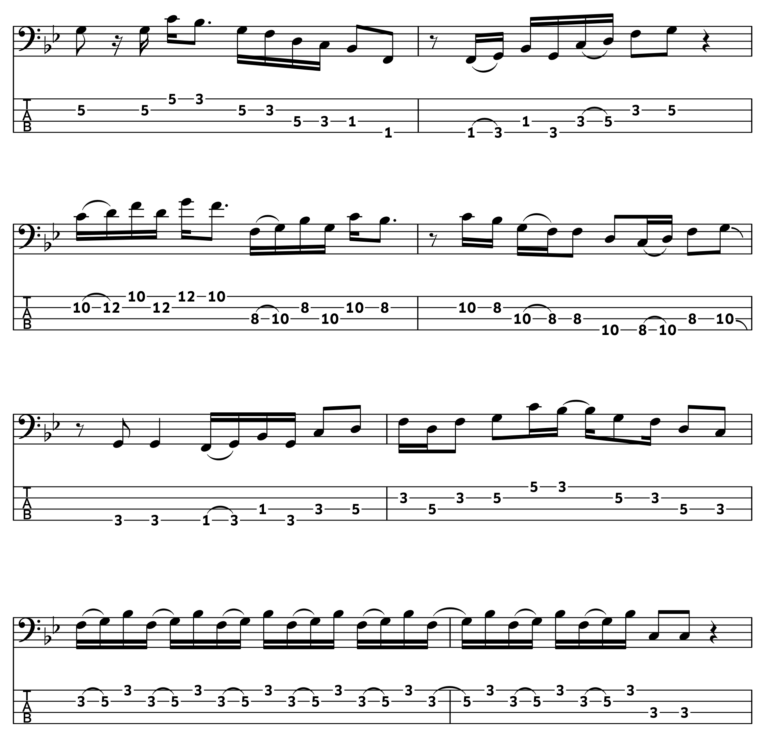
Things to notice (for your own bass line creation):
- The whole thing’s in G minor pentatonic, but there’s a great mix of the static form (in the first riff) with the shifting form (most of the solo).
- So much scale expansion! This really highlights the possibilities that open up if you can expand the shifting form above and below that one octave range.
- If you know where the scale is in a few different places on your neck, it can expand your bass line potential.
- Hammer-ons and articulation techniques add killer variety and quickness to lines.
We’ve gone about as far as we can go with this minor pentatonic scale.
We’ve been basking in the dark and spicy side of things.
It’s time to see what the lighter side of the pentatonic world has to offer.
The Major Pentatonic
If you have sunshine on a cloudy day, you’re hearing the major pentatonic scale. If when it’s cold outside, you feel the golden warmth of the month of May… that’s the major pentatonic scale.
These 5 notes combine to give you an instant dose of joy and good times.
The Static Form
Here is the major pentatonic in the first form – the static form. No shifting and moving around here – just plant that hand and grab them notes:
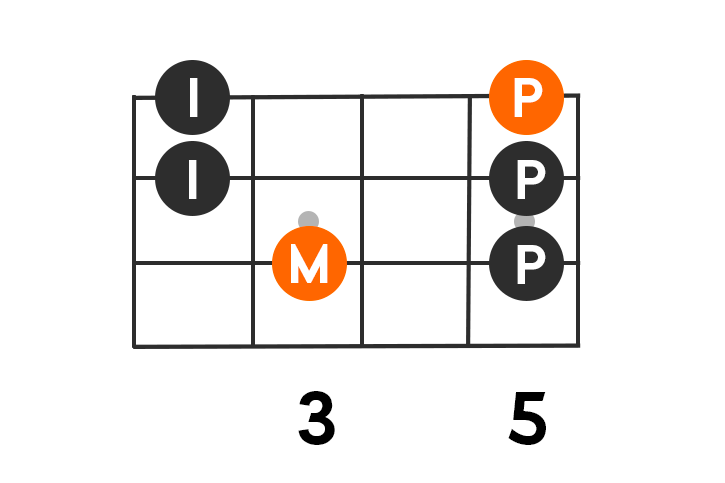

I know a brilliant line that uses this scale in the greatest way possible.
The problem is, it’s not a bass line.
But because it’s so damn iconic and perfect with this scale, I’m using it anyway.
 My Girl
My Girl
by The Temptations
Guitarist: Robert White
Scale: Major Pentatonic
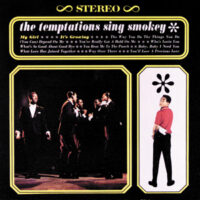
Motown session guitarist Robert White gets the credit for the guitar line in My Girl, as performed by The Temptations. It’s just the major pentatonic scale from low to high, but played with a cool rhythm.
These things are like vending machines for bass lines!! Have I said that yet??

Just a bit of rhythm and the scale becomes one of the most famous guitar lines ever recorded. Never underestimate the power of rhythm.

Also, never underestimate the power of our completely free beginner bass Kickstart Course!
The Shifting Form
Just like its evil twin, minor pentatonic, the major pentatonic has a shifting form. Once again, it’s the exact same notes, but repositioned.
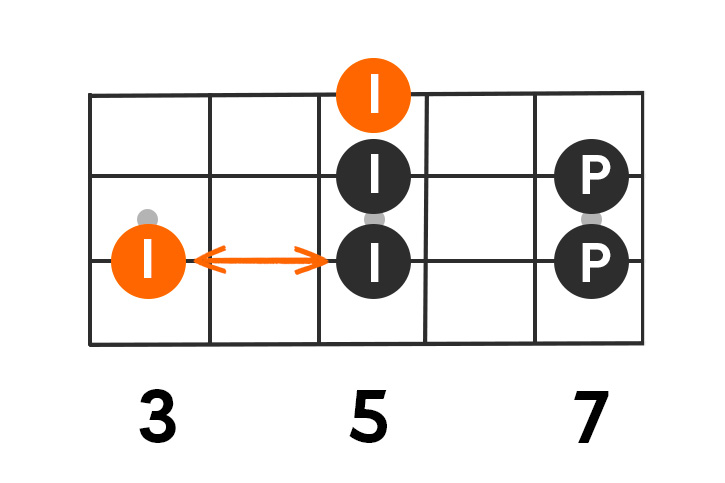

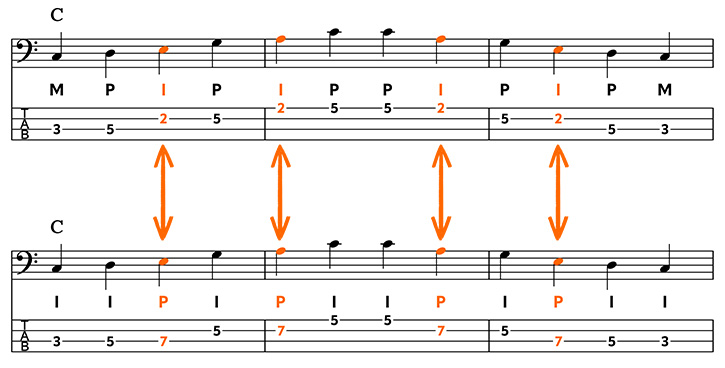
Some things on the bass will just feel good to play. For me, this form just feels good. The shape, the shift, everything about it makes my ears and hands happy.
Like any scale form, this can be moved anywhere on your bass.
To play our example bass line using this scale form, we’ll move it to D:

 Crazy Little Thing Called Love
Crazy Little Thing Called Love
by Queen
Bassist: John Deacon
Scale: Major Pentatonic

John Deacon shows up yet again to give us a pentatonic bass line gem. This time it’s Crazy Little Thing Called Love.

That shift in the shifting form becomes a slide, and the slide makes the bass line so damn slick and cool.
This bass line is not original. It is a classic walking bass / boogie-woogie / blues type bass line and rhythm.
But it absolutely rules.
Keep this in mind when you’re coming up with your own bass lines.
You don’t have to reinvent bass playing when you’re making bass lines. It can be a TRIED AND TRUE, used-a-million-times bass line. If you play it with guts, CONFIDENCE and some juju, it will rule.
When to Play Major Pentatonic
When the band be playin’ a major chord, you can play the major pentatonic scale.
Once again, if you’re not sure what chord the band is playing, dig on into…
My patented 3 step Chord Detector System:
(read this in announcer voice: This time with Major Pentatonic!)
 Chord Detector System
Chord Detector System
 Step 1: Ask Someone What Chord It Is
Step 1: Ask Someone What Chord It Is
- If you’re in a group/band/jam scenario, everyone should want the bassist to know what freakin’ chord to play to. This should be a mutually beneficial scenario.
- If this evokes any form of teasing, shaming, or other attempts at bad vibes, call me immediately. I, and a posse of burly, experienced musicians, will show up with our framed college music diplomas, and several cans of whoop ass.
 Step 2: Just Listen and Try to Tune Into the Sad/Happy Vibes
Step 2: Just Listen and Try to Tune Into the Sad/Happy Vibes
- Ear trainin’ = ear gainin’, as we used to say in the music gym where I worked out.
 Step 3: Just Play Major Pentatonic
Step 3: Just Play Major Pentatonic
- If it sounds bad, try minor pentatonic (which you just recently mastered).
What to Play With the Major Pentatonic Scale
Same program here as with the minor pentatonic.
To know what to do with this scale – for this scale to be a functioning vending machine that will faithfully crank out killer bass lines for you – start by studying the legendary players and what they’ve done with it.
Once you go through these bass lines you’ll have everything you need to start making your own.
Legendary Major Pentatonic Riffs
(By Legendary Bassists)
I’m going to loosely group these major pentatonic grooves according to their challenge rating. And – again – you can completely ignore that if it makes you happy.
Level #1
Sweet Home Chicago by The Blues Brothers
Higher and Higher by Jackie Wilson
Level #2
Psycho Killer by Talking Heads
I Can’t Help Myself by The Four Tops
You Are the Best Thing by Ray Lamontagne
Level #3
Jessica by The Alllman Brothers Band
 Knock on Wood
Knock on Wood
by Eddie Floyd
Bassist: Donald “Duck” Dunn
Scale: Major Pentatonic
Difficulty: Level #1
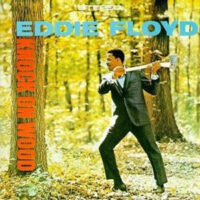
It’s no surprise that we’re leading off this major pentatonic groove section with a Donald “Duck” Dunn line. If ever there was a true champion of the pentatonic-scale bass line, it was him.
Heads up – the intro for this song dips into the minor pentatonic (which you’re already pro at) and then settles into major pentatonic for the verse.
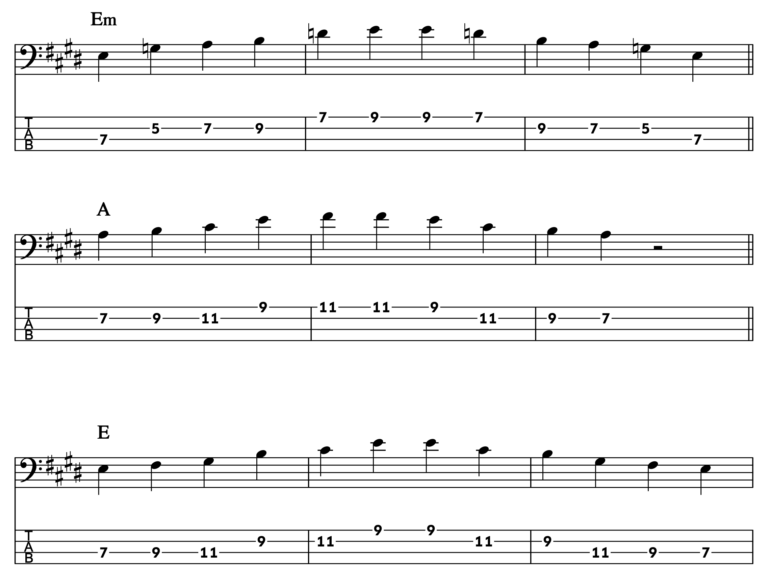
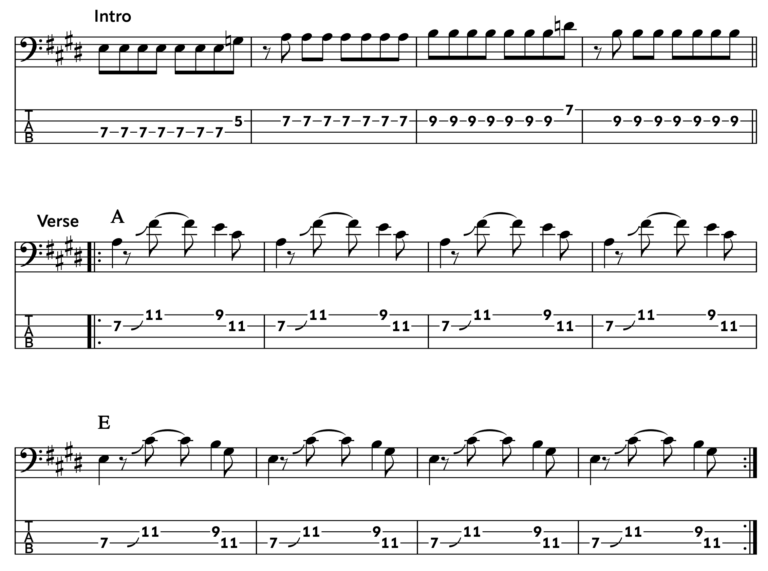
Things to notice (for your own bass line creation):
- Dunn is using the shifting form from the open A and E strings for his bass line.
- Minor and major pentatonic… together? Can you use both in the same song? In the same riff??? Yes. Absolutely. If it sounds cool, it is legal.
 Sweet Home Chicago
Sweet Home Chicago
by The Blues Brothers
Bassist: Donald “Duck” Dunn
Scale: Major Pentatonic
Difficulty: Level #1
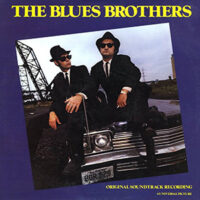
Another Duck Dunn bass line. He’s the pentatonic king, what can I say? Also, this is such a great swingin’ blues line that you’ve gotta learn it.
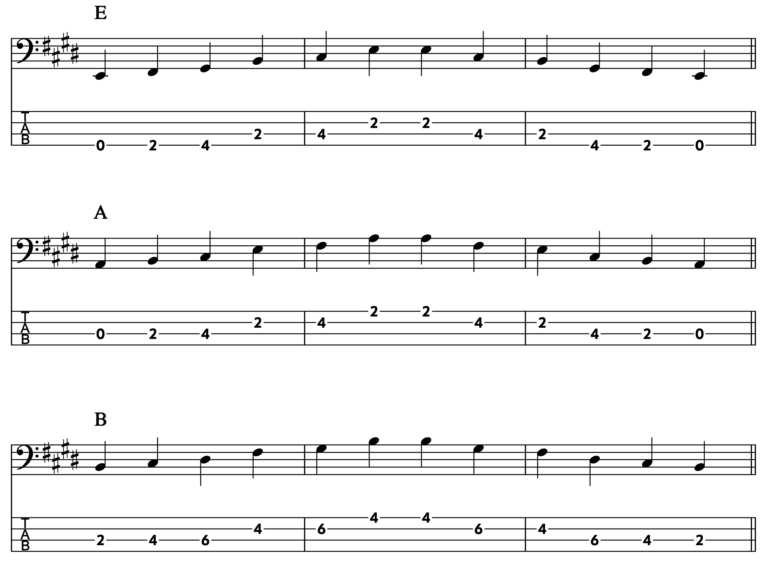
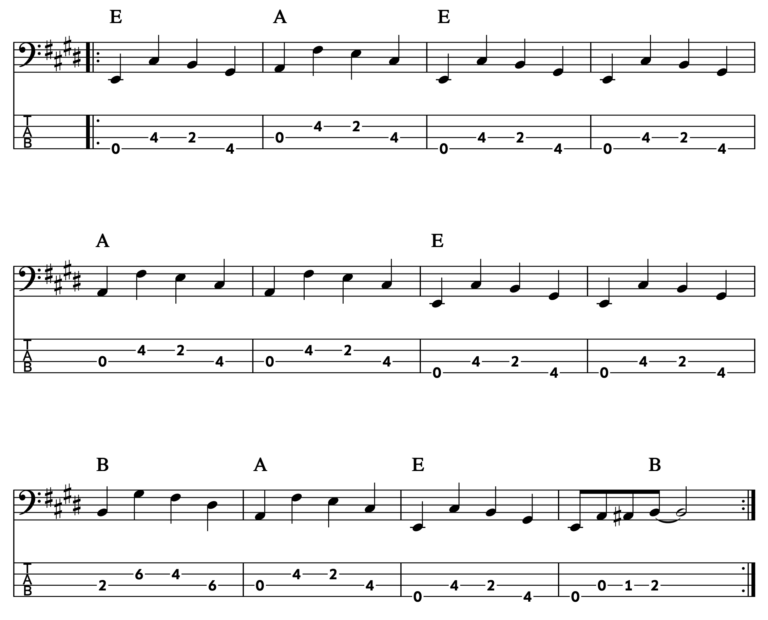
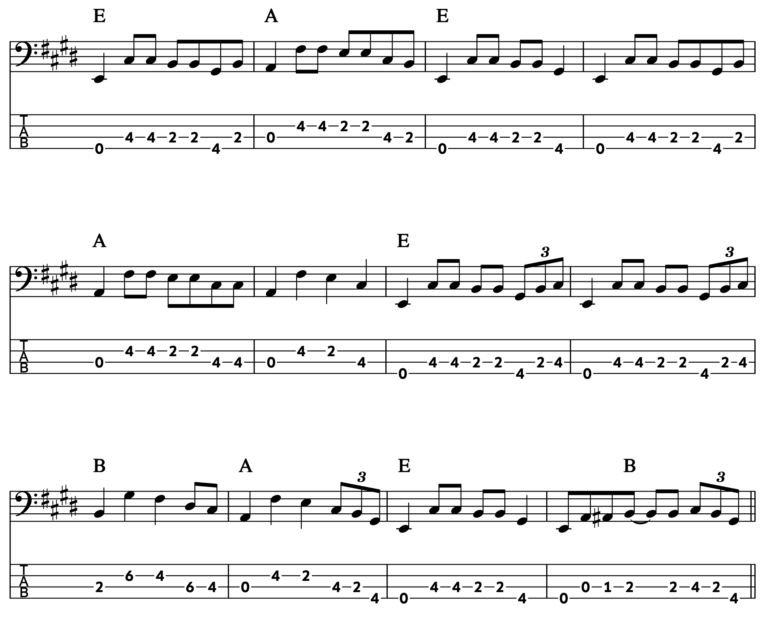
Things to notice (for your own bass line creation):
- Repetition is the key to consistent grooves! The same pattern over and over is OK to do.
- In both this bass line and the bass line to Knock On Wood Dunn leaves out one note of the scale – the 2nd note.
- So, if you love these two lines, that might be a note to leave out, or play sparingly.
- It’s a 12 bar blues! And if you’d like to know more about that, check out this lovely blues article.
 Higher And Higher
Higher And Higher
by Jackie Wilson
Bassist: James Jamerson
Scale: Major Pentatonic
Difficulty: Level #1

While we’re hanging out in the soul-bass-player Pantheon of bass gods, let’s get a James Jamerson bass line in here, shall we?


Just like you saw in the minor pentatonic, when you have a shifting scale form, it becomes very easy to expand using the same copy-paste technique.
In this case, an absolutely essential bass player tool is revealed by copy-pasting the shifting form below the one octave form you’ve played so far.

The two notes that are so easy to grab below the root note become the entire bass line for this song.
Not only that, this move gets used all over the place in Motown inspired soul music across the ages.
I call it the Soul Scoop.
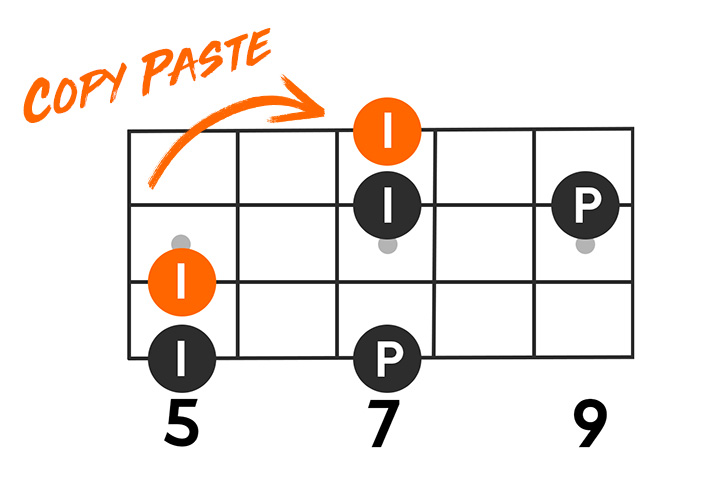
(from D major pentatonic – shifting form)

These particular notes being used to scoop up into the root note and embellish it show up everywhere – particularly in the soul music of the Motown era. They make up this entire bass line! Learn this and store it in your bass player tool box.
(It’s massively important that you learn the Soul Scoop and see how it relates to the major pentatonic scale, because it is going to be alllllll over the bass lines coming up.)
Things to notice (for your own bass line creation):
- I know I’m repeating myself, but – according to me – repetition is the key, and here we have some serious repetition!
- The entire bass line is made up using the expanded shifting form.
- The entire bass line is made up using the Soul Scoop.
 Psycho Killer
Psycho Killer
by Talking Heads
Bassist: Tina Weymouth
Scale: Major Pentatonic
Difficulty: Level #2

Tina Weymouth is another master of repeating a groove to attain maximum consistency and danceability!

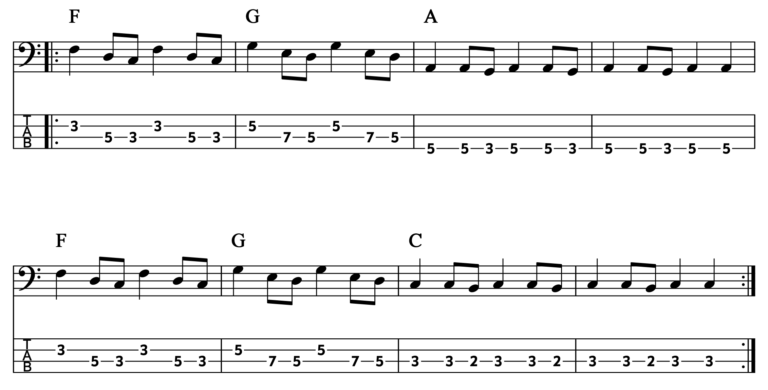
Things to notice (for your own bass line creation):
- The intro and verse uses notes from minor pentatonic.
- The chorus uses notes from major pentatonic.
- Tina is using the Soul Scoop, but has reversed the order from what we’ve seen so far. This is, of course, absolutely allowed and supported.
- There is a note here not in the scale and it is allowed because it sounds good.
 I Can’t Help Myself
I Can’t Help Myself
by The Four Tops
Bassist: James Jamerson
Scale: Major Pentatonic
Difficulty: Level #2
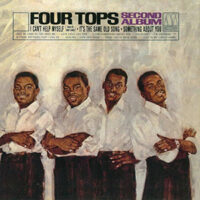
James Jamerson once again shows us exactly how to use the Soul Scoop to maximum effect.

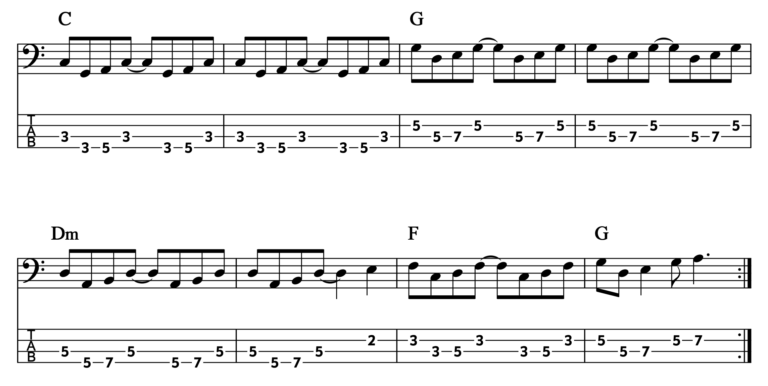
Things to notice (for your own bass line creation):
- The verses of the song move through 4 different places where Jamerson can utilize his Soul Scoop pattern.
- Once you have a cool pattern you can move it wherever you want/need it.
- It moves quick. There may be only 3 notes in the pattern, but it’s a very constant and quick rhythm.
- He breaks his pattern at the end of each phrase which really helps set up the repeat.
 You Are the Best Thing
You Are the Best Thing
by Ray Lamontagne
Bassist: Ethan Johns
Scale: Major Pentatonic
Difficulty: Level #2
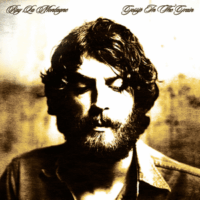
Ray Lamontagne recorded a dynamite soul/americana single with You Are The Best Thing. The producer and bass player on the track was Ethan Johns. I love getting to play this line with the horns.

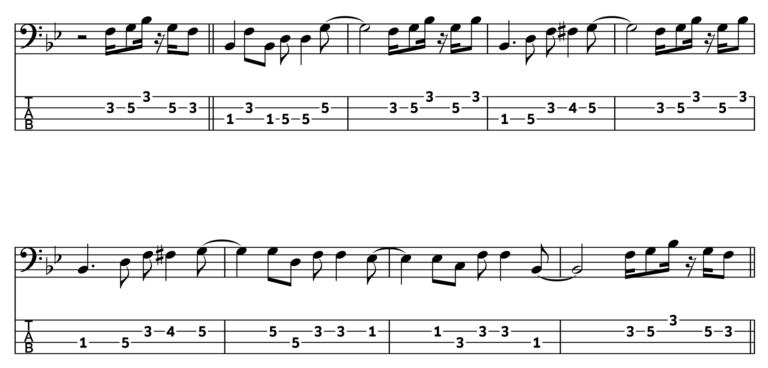
Things to notice (for your own bass line creation):
- Playing unison lines (hip musician term for ‘playing the exact same part together) with horns is fun.
- Did you see that Soul Scoop in the horn (unison) line? I told you it was everywhere.
- There’s a note in this bass line that is not in the major pentatonic scale!
- But it sounds good, so it is thus allowed.
 Jessica
Jessica
by The Allman Brothers Band
Bassist: Lamar Williams
Scale: Major Pentatonic
Difficulty: Level #3
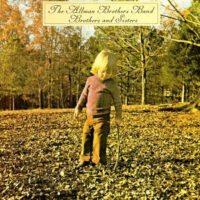
The Allman Brothers make another appearance, but with a different bassist. Lamar Williams plays the bass line for this classic jam.

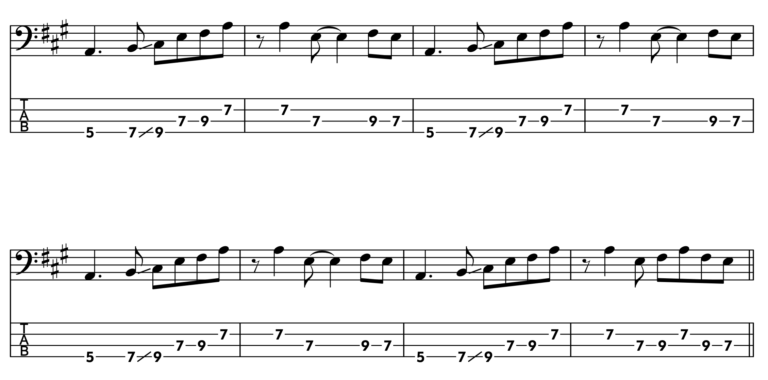
Things to notice (for your own bass line creation):
- He is speeding through that shifting form. It’s basically a one note groove on the low and high octave roots of the chord, but there’s a flash and flurry of the major pentatonic to give it color and flavor.
- There’s a lot of constant repetition of the bass pattern.
- Some excellent bass fills using the scale.
 Peg
Peg
by Steely Dan
Bassist: Chuck Rainey
Scale: Major Pentatonic
Difficulty: Level #3

Chuck Rainey played this super funky major pentatonic riff. Look, I’ll be honest, Steely Dan is not my personal cup of tea. But there’s no denying a killer bass line like this.
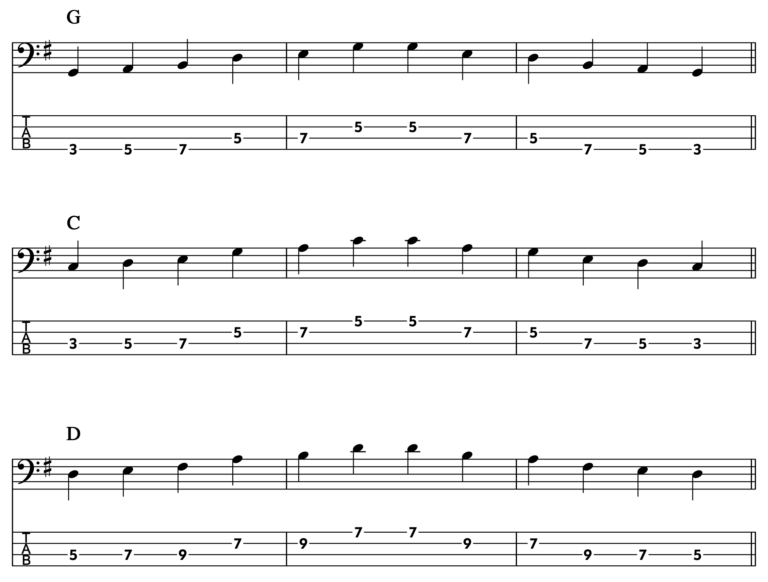
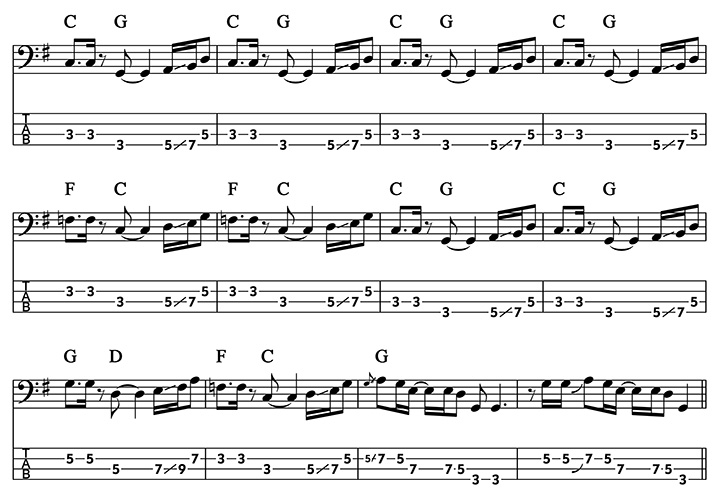
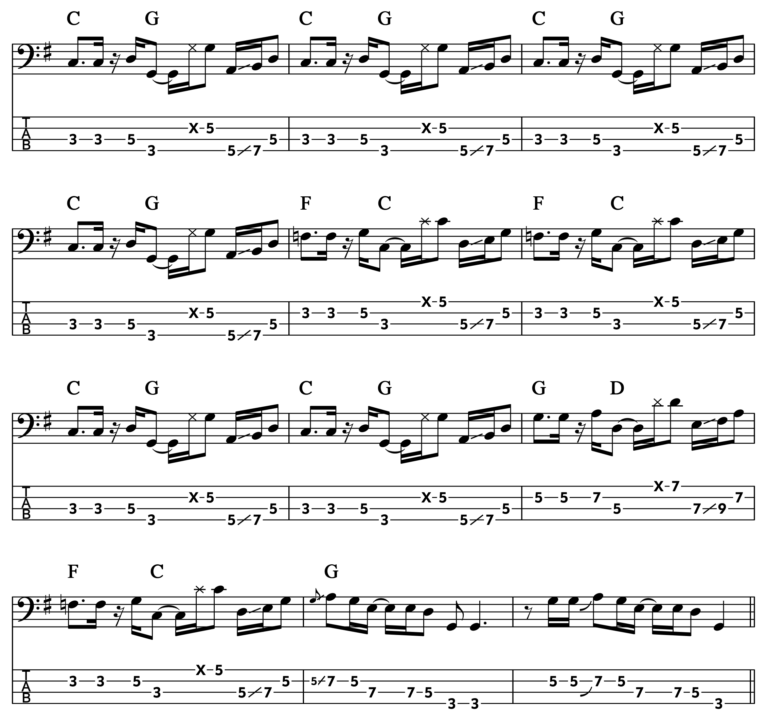
Things to notice (for your own bass line creation):
- It’s all about those ghost notes and that super hip rhythm.
- Once again, the shifting form is used to its best advantage.
- It is so damn cool when he breaks the pattern at the very end of the verse with those excellent and tasty bass fills.
- It’s the same bass pattern taken through the 3 different chords of the verse.
 Sir Duke
Sir Duke
by Stevie Wonder
Bassist: Nathan Watts
Scale: Major Pentatonic
Difficulty: Level #3
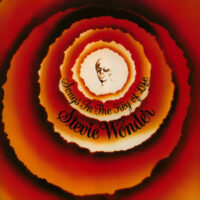
If I said bass grace at night over my meal, it would be a Benedetti tradition to add “and thank you Nathan Watts for the bass line to Sir Duke”. It’s that good. The whole song! But for my purposes here, I’m giving you just the absolutely bananas major pentatonic fireworks show that is the massive unison line (the part y’all play together) with the horns.
It’s like your major pentatonic graduation diploma.

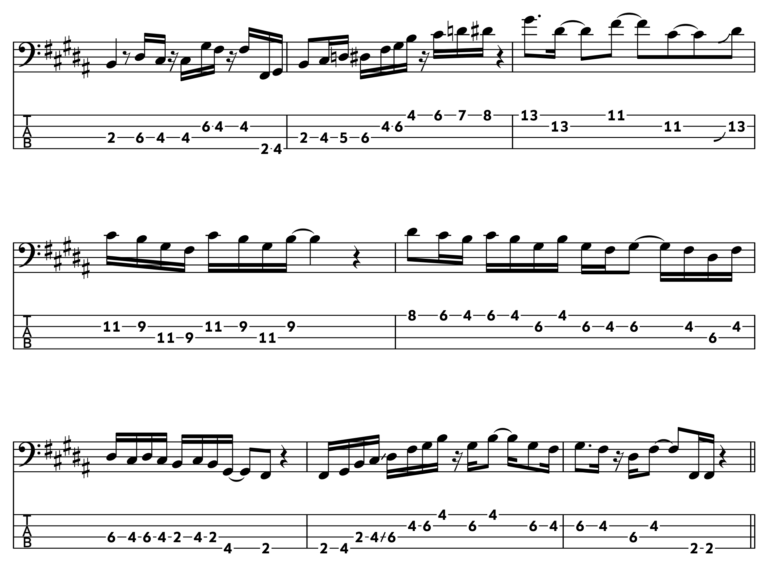
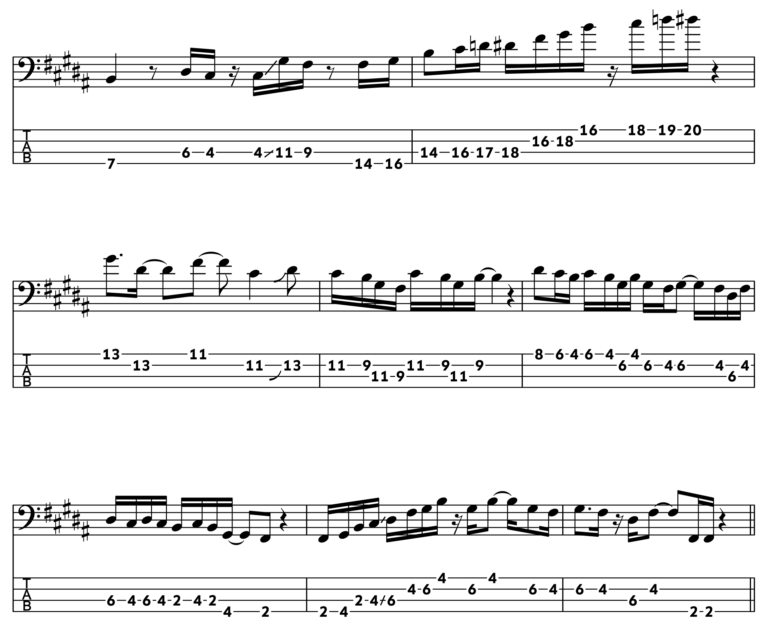
Things to notice (for your own bass line creation):
- The shifting form is used here in every possible location on your bass.
- Just like with the minor pentatonic and Ape is High – very cool things can happen when you expand the scale beyond the one octave range.
- Great extra non-scale notes added because they sound so perfect and awesome.
- The rhythmic phrasing has no regularity which makes it feel way more like a vocal line, or a solo, or a melody than a repetitive bass groove.
- At the risk of repeating myself, unison lines with horns are pretty damn fun.
This is the end of the examples from the world of classic and legendary bass riffs.
Now that you’re fueled up with these lines, steal like a bassist.
Use these ideas, the rhythms you like, the note combinations you like, and start to find your own bass lines.
Put some ideas and rhythms in the vending machine and see what you can get to come out.
How to Create Sick Pentatonic Riffs
This is it!
The ultimate payoff – using these scales to make up your own bass lines.
There are 2 playalong tracks below.
Each one is a one chord jam that will sound perfect with a pentatonic bass groove in the correct key.
Your mission is to create bass grooves to these tracks.
However.
I fully understand the potential mystery and terror of being left hung out to dry with an encouraging “now make something up” as though it were natural or easy for everyone.
To make sure that the make-up-your-own-bass-line part of this lesson is stress free, I’ve broken it all down into a fool-proof process.
To have your tasty and delicious bass line delivered to you from the pentatonic vending machines, just follow the steps:
Step #1
What Notes to Play
You need to know what notes are going into your bass line, which means you have to find the correct root note, and then play the correct scale.
This brings you back to my patented 3 step Chord Detector System.
For these examples, the tabs and the playalong track names give away what scale you’re going to need. But if you’re into the idea of simulating figuring out what the root note and scale type is, you can try this:
To find the root note, pick a note on your bass. Somewhere low, but not too low. Maybe an A or a C or something.
If it sounds perfect, like it’s the foundation for the entire band, you’ve found the root!
If it’s not right, start by moving either up or down a fret at a time.
Once you find the root note (if you find the root note), you have to use those ears to figure out if you’re in the dark and spicy land of minor pentatonic or the happy, sunny fields of major pentatonic.
If your ear can’t tell, just pick a scale and try it. If it sounds good you got it.
If it sounds bad, try the other one.
Once you have the correct root note and scale, you have to choose what position and scale shape to use:
- What octave/position on the fretboard you start from is up to you.
A good rule of thumb is to start as low as you can. Since that’s our exclusive range, it’s usually best to cover the low stuff.
- What shape you use is up to you.
Play the one that feels best to you.


Step #2
When to Play Notes
If you know what notes to play, you need to decide when to play them.
You need a rhythm.
If you read any of my things to notice for your own bass line creation up above, I had lots to say about rhythms. A good rhythm will make a good bass line.
So… what’s a good rhythm?
A good rhythm is one that you can play with bold, groovy confidence. And not ‘you’ as in the general ‘some other person’ you, but actually you.
If you’re comfortable with simple, solid rhythms but syncopations throw you off, keep it simple.
If you syncopate rhythms in your sleep like it ain’t no thing, great.
Just make sure you can feel exactly where your notes need to go.
Don’t get wishy-washy here! A solid rhythm will make a solid bass line, guaranteed.
Choose your rhythm.
Either sing it or tap it to yourself as you listen to the playalong.
For this first attempt, keep it super simple, and make sure it is easy to repeat over and over.
Remember the tips from the recipe notes:
- Keep it simple
- Leave lots of space
- Repetition is your friend
Step #3
Play With Only the Low Root
Now that you know what to play and when to play, you will start to combine the two elements.
The first combination will be to play the rhythm you decided on with only the low root.
That’s it.
One note with your simple rhythm.
This is often the best possible bass line for a song.
We’ll add complexity as we go for the sake of experimentation, but never underestimate the power of root notes with a rhythm!


Step #4
Play With the Root & 1 Other Note
You can choose any other note in the scale to be your second note.
I’d suggest this one right here:
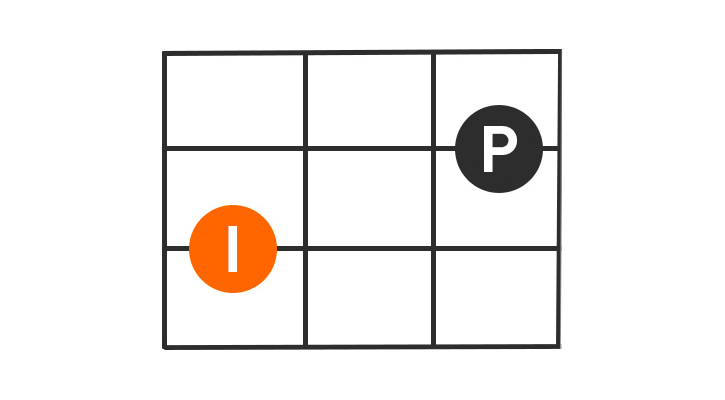
It’s the only note (other than the root) that both pentatonic scales have in common.
Any note from this scale will work alongside that root. Some will sound better to you than others. Only you will know what you like best. You just have to get in there and mess around a bunch.
Make sure your groove starts on the root note. You can sprinkle the other one wherever you think it fits in the rhythm other than that first note.


Step #5
Play With the Root & 2 Other Notes
Same as before, but add one more note.
Any time you add notes, they are options! Suggestions only. If the line sounds better with only 1 or 2 notes, leave the 3rd one out.
As before, you can experiment to find what 3 note combo works best – so long as you still have the root in there, and so long as you still play the root on beat 1.


Step #6
Play With the Whole Scale
Now you have access to the whole scale.
Mo’ options means mo’ problems.
To keep it simple, make sure the root is first on beat one. Don’t play notes to fit them in! You don’t necessarily have to use all the notes of the scale.
If the groove just sounds weirder or worse when you add notes, leave ‘em out!
Play what you like. If you like it, there’s a very good chance other people will also like it.

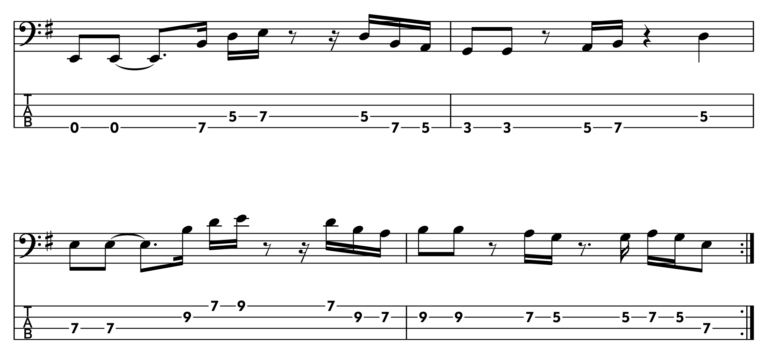
Once you’ve played through these steps and gotten a few good grooves under your belt, you can cut loose a little bit.
You can get wild with it as long as the groove never falters!
Keep these scales close to you at all times. Drop in those rhythm quarters, and watch the delicious, refreshing, ever-killer bass lines come pouring out.


Comments
Got something to say? Post a comment below.